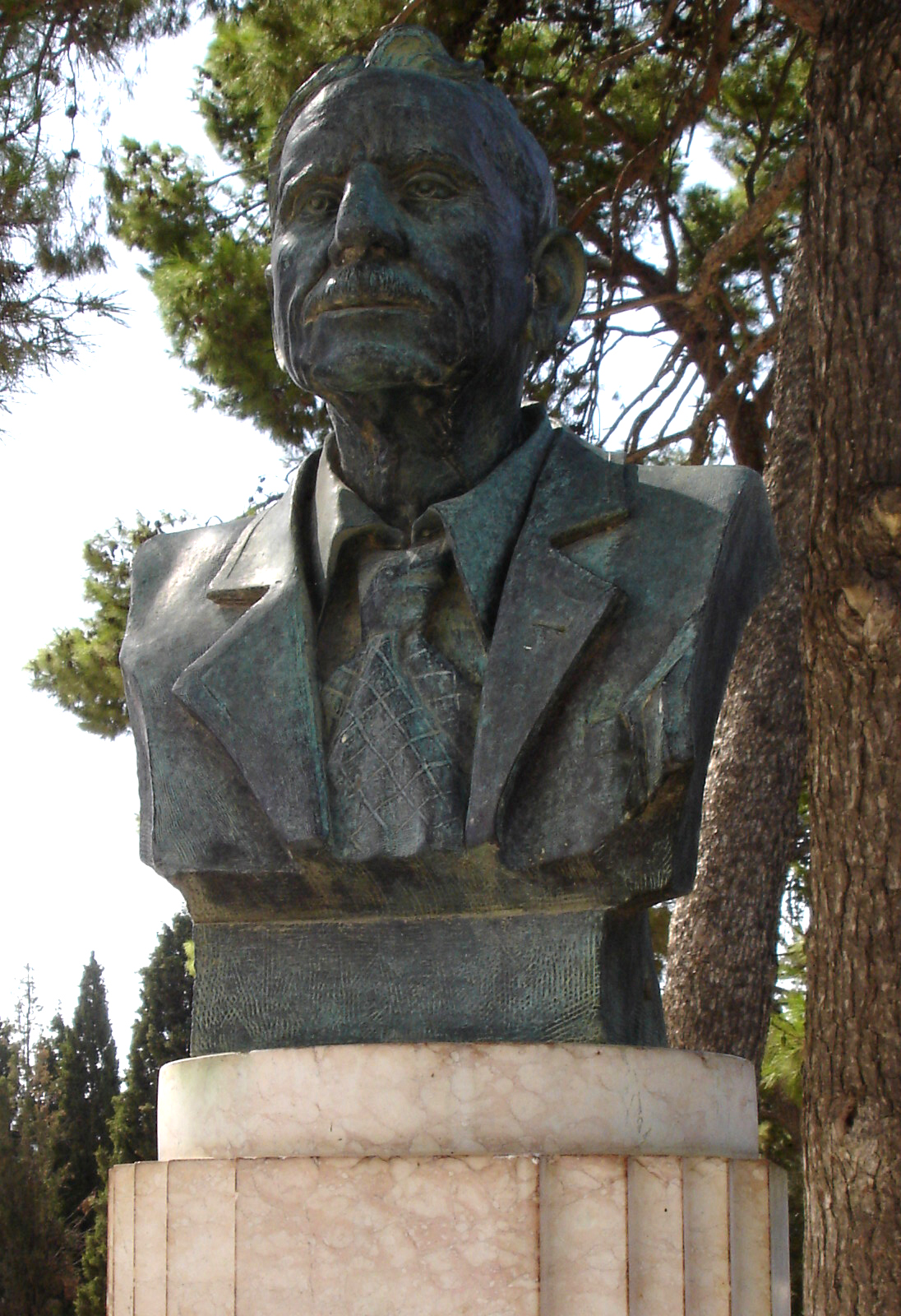- Arthur Evans
Infobox Scientist
name = Arthur Evans
box_width =
image_width =150px
caption =Bronze statue of Sir Arthur Evans at Palace of Knossos
birth_date =July 8 1851
birth_place =Nash Mills
death_date =July 11 1941
death_place =Boars Hill
residence =
citizenship =
nationality =
ethnicity =
field =archaeology
work_institutions =
alma_mater = Oxford
doctoral_advisor =
doctoral_students =
known_for =Knossos
author_abbrev_bot =
author_abbrev_zoo =
influences =
influenced =
prizes =
religion =
footnotes =Sir Arthur John Evans (
July 8 1851 –July 11 1941 ) was a Britisharchaeologist most famous for unearthing the palace ofKnossos on the Greek island ofCrete atKephala Hill. Evans was born inNash Mills ,England and attendedHarrow School , Brasenose College, Oxford, and theUniversity of Göttingen .Crete excavations
Before Evans began work in Crete, archaeologist Minos Kalokairinos unearthed two of the palace’s storerooms in 1878, but the Turkish government interrupted his work before he could complete
excavation s. Evans had been deciphering script on seal stones on Crete in 1894 and when the island was declared an independent state in 1900, he purchased the site and began his excavations of the palace ruins. Arthur Evans found 3,000 clay tablets during excavations and worked to transcribe them. From the transcriptions it was clear that the tablets bore traces of more than one script. Evans dated the Linear A Chariot Tablets at Knossos as immediately prior to the catastrophic Minoan civilisation collapse of the 15th century BC. (Hogan, 2007)On the basis of the ceramic evidence and stratigraphy, Evans concluded that there was a civilization on Crete before the civilizations recently brought to light by the adventurer-archaeologist Heinrich
Schliemann atMycenae andTiryns . The hugeruin of Knossos spanned five acres and had a maze-like quality to it that reminded Evans of the labyrinth described in Greekmythology as having been built byKing Minos to hide his monstrous child. Thus, Evans dubbed the civilization once inhabiting this great palace the Minoans. By 1903, most of the palace was excavated, bringing to light an advanced city containing with artwork and many examples of writing. Painted on the walls of the palace were numerous scenes depicting bulls, leading Evans to conclude that the Minoans did indeed worship the bull.cripta Minoa - The source of the Phoenician alphabet
Evans in his 1901 work "Scripta Minoa" claimed [citation
title = Scripta Minoa - Volume 1
first = A.J. | last = Evans
date = 1909
page = 87,89
publisher = Oxford] , that most of the symbols for thePhoenician abjad are almost identical to the many centuries older, 19th century BC,Cretan hieroglyphs .The basic part of the discussion about Phoenician alphabet in "Scripta Minoa-Vol.1" takes place in the section "Cretan Philistines and the Phoenician Alphabet", pages 77-94. Modern scholars now see it as a continuation of the
Proto-Canaanite alphabet from ca. 1400 BC, adapted to writing a Canaanite (Northwest Semitic) language. The Phoenician alphabet seamlessly continues the Proto-Canaanite alphabet, by convention called Phoenician from the mid 11th century, where it is first attested on incribed bronze arrowheads. [Markoe (2000) p. 111]Legacy
Evans was knighted in 1911 for his services to
archaeology and is commemorated both at Knossos and at theAshmolean Museum . In 1913 he paid out of his own pocket £100 to double the amount paid with the studentship established jointly by theUniversity of London and theSociety of Antiquaries in memory ofAugustus Wollaston Franks , won that year byMortimer Wheeler .Evans should also be remembered for his own obstinate Creto-centrism which led to unfriendly debate between himself and the mainland archaeologists
Carl Blegen andAlan Wace .From 1894 until his death Evans lived on
Boars Hill , near Oxford. His house, 'Youlbury', has since been demolished. He hadJarn Mound built (by hand), surrounded by a wild garden, to make work during the depression years. Evans left part of his estate to the Boy Scouts and Youlbury Camp is still available for their use.References
*Cottrell, Leonard (1957). "The Bull of Minos". An account of the archaeology of Crete for the general reader, with much information about Evans's work.
*Evans, A.J. (1901). "Scripta Minoa - Volume 1".
*Evans, A.J. (1952). "Scripta Minoa - Volume 2".
*Evans, A.J. (1921-35). "The Palace of Minos - Volumes 1-4".
*Evans, A.J. (1933). "Jarn Mound".
*Hogan, C. Michael (2007} "Knossos", The Modern Antiquarian [http://letmespeaktothedriver.com/site/10854/knossos.html#fieldnotes]
*Markoe, Glenn E.(2000). Phoenicians. University of California Press. ISBN 0-520-226135 (hardback).
*Powell, Dilys (1973). "The Villa Ariadne". Originally published by Hodder & Stoughton, London. A very lively account of Evan's residence at Knossos and the house he build himself there, which he later willed to the British School of Archæology at Athens.
*Ross, J. (1990). "Chronicle of the 20th Century". Chronicle Australia Pty Ltd. ISBN 1872031803.
*MacGillivray, J Alexander (2001). "Minotaur - Sir Arthur Evans and the Archaeology of the Minoan Myth". Published by Pimlico, a division of Random House. (Originally published by Jonathan Cape in 2000). A fascinating critical biography by someone who was himself an archaeologist associated with the site at Knossos for several years, and who is able to place the remarkable story of Evans in the context of the scientific and sociopolitical environment in which he lived.Arthur Evans - Ancient Illyria: An Archaeological Exploration (Hardcover)
Wikimedia Foundation. 2010.
